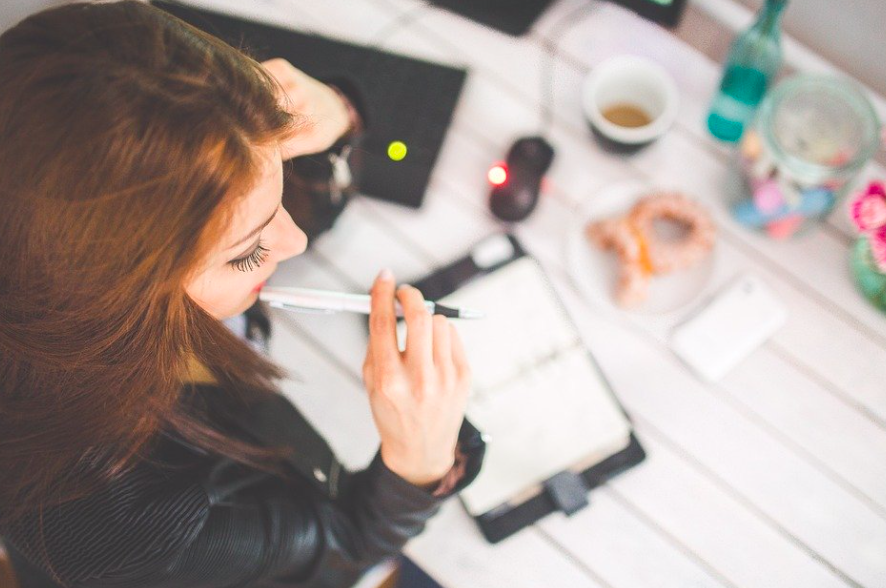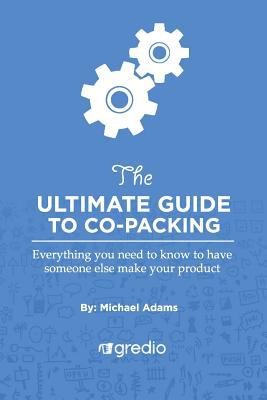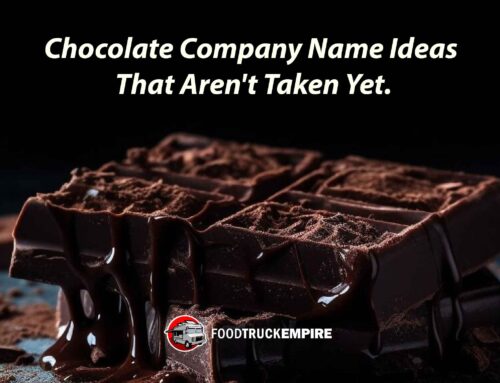After being in the food industry for 11 years, I’ve learned a lot. I’ve also failed hard and succeeded. It’s the failure part no one ever wants to write about. The mistakes and horror stories that made my company what it is today. And that’s exactly why I wrote this guide for you.
I want you to learn from my mistakes so you (hopefully) don’t make the same wrong decisions. My goal is for you to build a profitable company that supports your family, makes tasty food, and is, most important of all, fun for you to wake up and build every single morning. Let’s get started:

25 Mistakes I’ve Made Running My Food Business
1. Not thinking my ideas through
I used to be a fan of writing my ideas for food businesses on one sheet of notebook paper (if I could even get it out of my head). But, that isn’t enough to flesh out the idea of starting a food business. You have to think about marketing, operations, production, sales, accounting, distribution, packaging, labeling, hiring, etc.
My advice? Write a business plan. Even if it’s just 35 pages. Get something down. Then, research your idea to see if you really can make it happen.
2. Not protecting my legal assets soon enough
In July 2014, we received letter from a large condiment manufacturer asking us to stop using the name of one of our mustards because it infringed on their trademark.
While I wasn’t up for spending thousands of dollars in legal fees, we ultimately decided to change the name. That taught me I needed to protect all of my legal assets and slowly build a legal portfolio. You should do the same if you have a unique company name, product name, or slogan.
3. Putting everything on debit cards
The food industry is cash intensive. That means a lot of cash is going out. At the same, you’re waiting 30 – 60 days for your cash to come in. For the first four years of my business, everything was purchased using a debit card.
While that worked when we were just starting out, it failed me as we tried to grow. The value of credit cards is you get 30 “extra” days to pay the bill. That’s nice when invoices from your suppliers climb into the thousands. Before you run and finance your food business on three credit cards, make sure you have the money in the bank to pay them off.
Otherwise, you end up in debt. And we all know debt sucks.
4. Thinking I could make the product myself

Promoting at a local farmer’s market over the weekend.
In 2007, I made the first jars of Green Mountain Mustard with my Dad on the stove at my parent’s house. We made three jars, then nine, then twelve. Within weeks it became 36 jars a night after work three times a week. That was exhausting.
Rather than continue the trend of slaving over a hot stovetop, I looked for a co-packer to produce my product (read about my experiences in the The Ultimate Guide to Profitable Co-Packing). Why did I copack? Simply because if I spent all my time making the product, there would be no one to sell it. And if you don’t sell your product, well, you don’t make any money.
5. Thinking I could do everything myself
There’s a lot involved when running your own business, as I’ve already mentioned. As a singlefounder, I thought I could do everything. You know, Chief Cook and Bottlewasher kind of thing. Newsflash: I can’t. I started outsourcing data entry, online order shipments (thanks, Mom!), retail store leads, and more recently events, demos, and farmer’s markets.
All so I can focus on growing my company. When you’re starting out I’d say the first year or two you can probably do it all yourself. However, as you grow, you’ll want to bring on some team members to offload what you don’t want to do.
6. Not hiring a professional packaging designer

My rebranded mustard line after working with a designer.
In 2014, I spent $6,000 to rebrand Green Mountain Mustard. It’s the most money I’ve spent to do anything in the 11 years I’ve owned a food company.
Was it worth it? Absolutely. When starting out, I designed my own labels and they were poor print quality, looked like every other Vermont company’s products in the grocery store, and quite frankly, they were pretty ugly. I needed a change, found a designer (who is now a great friend, too), and redesigned our packaging. Now, I sell a lot of mustard simply because it looks cool. Walk the summer or winter fancy food shows. You’ll notice how there are a ton of companies with beautiful packaging. That’s your competition. Make your packaging just as, if not more, beautiful.
Here’s a look at what my labeling used to look like. Looking back, it was pretty amateur.

My original DIY packaging / branding.
7. Not measuring a correct net weight for my product
This was my first production error. I produced 1,200 jars. And screwed up the net weight. My copacker said she was using 10 oz jars. That meant 10 oz of mustard, right? Wrong.
The volume of what you put in the container is not always the container size just compare the volume of cement compared to feathers. The net weight is completely different. We ended up having to sticker every single label by hand. A nightmare? You bet. Get your net weight correct the first time.
8. Not searching for the best packaging solution
I picked a 9 oz straightsided jar because it looked nice and was inexpensive. But, everyone else and their mother uses the jar for their product. I can count several Vermont producers alone. Along with the importance of packaging design (see #6), it’s also important to choose the right container for your product.
Don’t choose the cheapest because it’s cheap. Think about how you want your brand represented on the shelf and when you’re holding the product in your hands. Then, make your packaging decisions. And find the best price. Ordering a pallet of anything is going to be cheaper per unit the same with ordering 35 pallets. Shop around and bargain, just like you would when you’re buying a car.
9. Ordering far too many labels, just to get a better price
I’ve made this mistake 3 times. I’ll learn eventually. The first time, I had the net weight problem. I tossed 3,000 labels. Then, we rebranded. I tossed nearly 10,000 labels. Then, we got in some legal hot water. I tossed 3,000 more labels. In total, 16,000 labels. And if other food laws get passed in 2016, we may have to toss even more labels.
The last time I ordered labels, it was 40,000 labels 8 large boxes worth and a $3,400 invoice I had to pay upfront. We did this do get our cost per label down to something manageable. But, ordering in smaller quantities has it’s drawbacks, too. Cost per label is skyhigh being the worst one. Plan for a little bit more than you need. You can always order more. I just end up staring at my label pile and see thousands of dollars tied up.
10. Thinking a distributor will sell product for me

Don’t expect a distributor to move product for you.
When I first landed distribution, I thought it was my ticket to mustard success. Man, was I wrong. While the first couple of purchase orders were nice bumps, I don’t move that much product through distribution. It took a talk at the Winter Fancy Food Show to learn what distributors do:
The only thing a distributor does is get your product from point A to point B. Don’t expect them to sell for you. Yes, they have salespeople, but you are your best salesman. Use the fact that you’re carried by this distributor to land accounts easier.
11. Neglecting store demos because they were a time waster
I’ll come out and say it: I don’t like store demos. In four hours, I may sell a case or two of product (there are a lot less people here in Vermont). In that same time period, I can sell 46 cases at an event and get many more people to try my product.
The difference? The customers at the demo, if they like your product, will hopefully keep buying it at that retailer. Then, the retailer reorders. For that reason, I’ve started paying more attention to demos. However, I outsource many of them to our demo guy locally. If it’s a large retailer, I’ll still do them.
Related Reading: The Hidden Costs of Working with a Co-Packer Revealed
12. Being reactive instead of proactive
I’ve battled this all of my life. I react to the smallest things. Whether it’s an email that just came in (I have to respond immediately). If an order comes in, I have to ship it that day. Someone throws out a business idea and I love it, I start working on it and get distracted. All of these situations are reactive, not proactive.
Being proactive means having a personal todo list for every day, identifying and winning certain accounts down you’d like to land, executing on marketing strategies, etc. Be proactive not reactive, And yes it is tough when you’re just one person. Your fulltime job is to be reactive. Being proactive takes a different mindset. Work every day on being proactive and your business will soar.
13. Not being open to taking risks early on
It was business as usual for the first few years. I had graduated college, was working fulltime in marketing and content with my lifestyle. But, I wasn’t happy. That’s why I quit my job. I took a risk with a growing mustard company, reinvested thousands and have been making it work ever since. All because I took a risk. I wish I took it sooner.
Attention Founders: Download our Complete Food Business Startup Kit with Business Canvas, Food Cost Spreadsheets and Exclusive Interviews with Proven Food Entrepreneurs.
14. Over reacting and getting stressed when I had bad days
As with any risk, you can fail or succeed. There are discouraging days and fantastic ones. It’s the bad days I haven’t reacted well too. More often than not, I’ve almost thrown in the towel. I was done with this food business thing. What I learned I had to change was my reaction to these bad days. Tomorrow will be better. I’ll make sales. I had to remind myself why I was doing this. You should do the same when the hard days try to take you down.
15. Not having the courage to say no when I needed to
I’ve turned down large grocery store chains more than once. Why on earth would I do that? We couldn’t come to an agreement on a price that would make both of us money, More often than not, the deals were not making me money. The margins were razor thin. I was unwilling to accept such low margins because we had to grow. I should have said no earlier. And stayed focused on how our company was going to grow. Don’t be afraid to say no.
16. Writing my first sales forecast 4 years after launch

My top selling whole grain mustard.
How much do you plan to make in 2014? I had no idea and we were already part of the way through the year. I have never made a sales forecast for my company until 2014. Four years of guessing is no way to run a business.
That means no goals, no plans, and a prayer for a stroke of luck every month. Now, I do sales forecasts, adjust them quarterly, and even plan for the following year starting in June of the previous year. Why? Because sales forecast help you plan productions, have a goal to shoot for, and are helpful if anyone (like investors) are curious.
17. Not keeping a good handle on my COGS
When I made mustard on the stovetop, it wasn’t too expensive. That’s because I was completely ignoring the fact that two people were spending 46 hours a week making mustard. Pricey stuff we made.
Then, after we switched to copacking, my cost (and sale price) went through the roof. I just kept selling at the regular price until (almost a year later) I reviewed our pricing. While we weren’t losing money we were making less money a lower gross profit margin. Make sure to review your costs on a monthly, if not weekly basis. Always look for better prices on everything, too ask around!
18. Thinking volume was the answer to tremendous growth
In Economics 101, I learned that a price decrease could be made up for in volume. Today, I’m leaning that, right now, it’s simply not true. To make the same margin requires a significant increase in volume.
And for us, that extra volume actually meant an increase in product cost. It sounds crazy, but it was true. It would cost us more per unit to make more product. I’m now focused on higher margin activities and negotiate to the death to get a better margin.
You Might Like: Download My Food Business Model Canvas with Template
19. Launching too many products too quickly
Four years. 12 mustards. And I make new flavors all the time. They just don’t make it to the shelf. Partly because I’m out of my mind to launch another flavor.
I’ve learned. A small product line saves money on inventory, keeps your retail pitch succinct, and virtually eliminates your customer’s potential decision paralysis. Four SKU’s are 54% of my sales. Don’t you think that should tell me something? (See, I’m still learning!)
20. Not taking advantage of specialty food groups or online blogs, etc.
There are lots of greats blogs and resources online that talk about starting a food business in addition to the materials. A few of my favorites are SmallFoodBiz.com, Recipal.com and FoodStarter.com. SpecialtyFoodResource.com has a fantastic (and active) forum, too.
These are are full of horror stories, question & answer posts, and valuable insight into what it takes to get your food product on the shelf.
21. Not building an advisory board from day one

Identify trusted advisors for your business and listen to them.
Many successful companies have one thing in common: they were not built by a single founder. There was a team of founders. And if there wasn’t, the single founder had a knowledgeable advisory board.
It took me four years to start building mine a team of people who have experience in the CPG space, financial space, and software space. All of them are committed to helping my company succeed by providing advice and direction in areas I’ve never navigated before.
22. Not learning “grocery lingo” soon enough
When you start out with a couple local stores selling your product, there aren’t many words you need to know besides wholesale price, sell sheet, and MSRP.
But, as you grow, the lingo doubles if not triples. For example. TI x HI, TPR, OffInvoice, Scandown, casepack, innerpack, UPC, LTL, bridge buying, shipper, FOB the list continues. Rather than sound like an ignorant business owner, I should have read up on many of these terms before starting to play ball with the players of big grocery.
Want to know what they all mean? Check out the list of food business vocabulary on the blog.
23. Ignoring email marketing
Email marketing prints money. I guarantee when you send an email to previous customers who have ordered from you online, at least one person is ready to order again. Return on investment for email marketing campaigns are great because it costs you nexttonothing to send that email. I recently started building my list of past customers.
While it’s only a few hundred emails, it generates hundreds of dollars a month for my business just off one, plaintext email. Amazing. You should try it! Sign up with MailChimp (not an affiliate link) and get started for free with up to 2,000 subscribers.
24. Trying to launch two businesses at once
Many entrepreneurs will find this one of the hardest parts of running a business: the temptation to launch another business. I’ve tried it twice and it just doesn’t work out. Your time is split between two companies none of which are getting your full attention. Launch one business and put your all into it. Focus, execute, learn, and take risks.
25. Forgetting to realize I have a life outside my business
I’m still working on this. When I left my full-time job, my business took over my entire life. 7 days a week, I was working 12 – 15 hours a day. I reached “burnout” after 5 months of flatout work. My immune system gave up. I was on the couch for three days.
Lesson? There is way more to life than working on your business. Yes, there will be long hours and hard days. But, get outside, take a walk, see your family and friends, enjoy spending time with them and shut your phone and laptop down. Know when to call it a day and spend the night with the ones you love.
So, that’s the list! Did you learn anything about starting or growing your food business? If you did, I’d love for you to let me know how the guide helped you in the comments below.
I also encourage you to sign up for our Food Business Startup Kit or read my epic guide on scaling your recipes by working with a co-packing partner.





